Best Lawn Fertilizer for Your Yard

Last updated April 15, 2024
The key to a lush, beautiful, green lawn is the application of the right fertilizer at the right time. This guide will help you find the best lawn fertilizer for your yard and learn how and when to apply it.
Table of Contents
Understanding Fertilizer Labels
Types of Fertilizers
Cool Season vs. Warm Season Grasses
When to Fertilize Your Lawn
How to Fertilize Your Lawn
Fertilizer Solutions for Common Lawn Problems
Understanding Fertilizer Labels
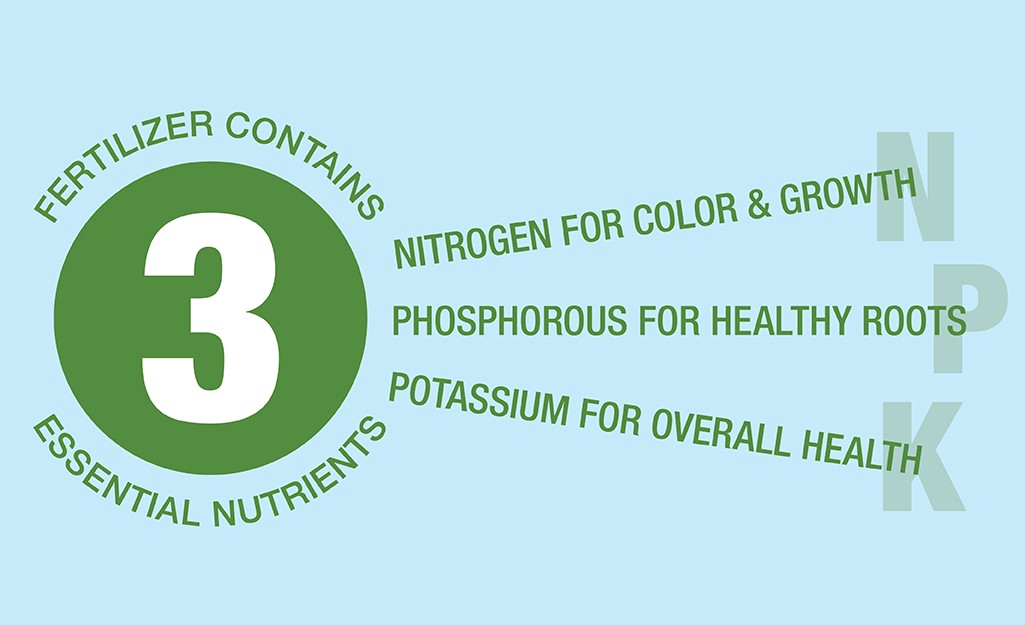
All lawn fertilizers contain three main nutrients listed in this order on the package: nitrogen, phosphorous and potassium (N-P-K).
Fertilizers for other plants can have different ingredients in different amounts. Use fertilizer specifically designed for grass for the best results.
The N-P-K indicates the percentage by weight of each of these three nutrients. For example, a common type of all-purpose fertilizer is referred to as 10-10-10. That means the bag contains an N-P-K ratio of 10 percent nitrogen, 10 percent phosphorous and 10 percent potassium. The remaining ingredients contain other nutrients and fillers.
- Nitrogen (N) promotes rapid growth and lush, green color.
- Phosphorous (P) helps develop healthy root systems. Starter lawn fertilizers have a high phosphorous count for this reason, while fertilizers for established lawns have a relatively low amount.
- Potassium (K) boosts the overall health of your grass and helps with disease resistance, drought protection and cold tolerance.
Tip: Remember these numbers by keeping “up, down and all-around” in mind when reading fertilizer labels. The first number promotes rapid growth ("up"), the second promotes root development ("down") and the third number promotes overall grass health ("all-around").
Types of Fertilizers
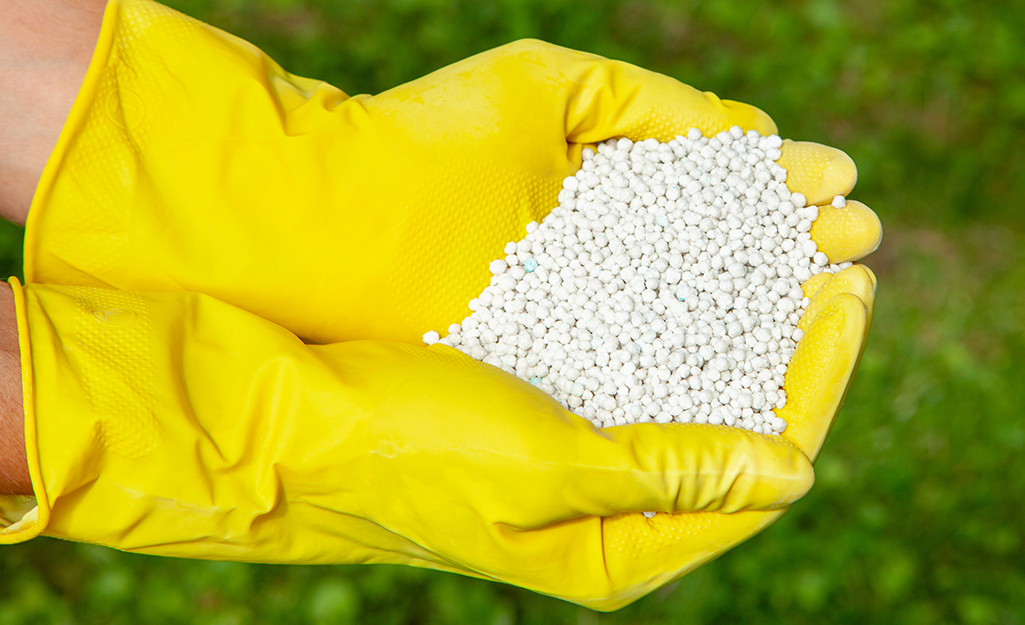
The main types of fertilizers are granular, liquid, organic and synthetic.
Each is designed to produce a different outcome for your lawn.
The best fertilizer or lawn care product for your needs may be one that also controls unwanted growth or bugs. These include:
- Pre-emergent weed control, or “weed & feed” fertilizers that feed your lawn while helping prevent weeds. They strengthen and encourage growth in the roots of the grass.
- Quick-greening fertilizers for use on established lawns. These have a nitrogen-heavy formula that brings beautiful green color to a tired lawn.
- Moss and fungus control fertilizers that kill moss without damaging the surrounding lawn.
- Lawn weed killers that are usually available in liquid form, although some are granular. Depending on the type, a lawn weed killer can kill crabgrass, chickweed, black clover and other common unwanted lawn growth.
- Lawn insect control
products that can be applied in both growing or dormant seasons to manage harmful insects such as ants, fleas and ticks. Apply these with a broadcast or rotary spreader. - Weed and grass killers that eliminate any growth in areas you want free of plants and grass. They are typically very fast-acting.
To make sure you cover your entire lawn with fertilizer, apply it in overlapping patterns. Make one complete pass vertically across your lawn and a second pass horizontally.
Fertilize only when the grass is dry to reduce the possibility of leaf burn, and water your lawn thoroughly after fertilizing so the nutrients soak into the soil.
Clean your spreader before putting it away to reduce a build-up of dirt and chemicals.
Cool Season vs. Warm Season Grasses
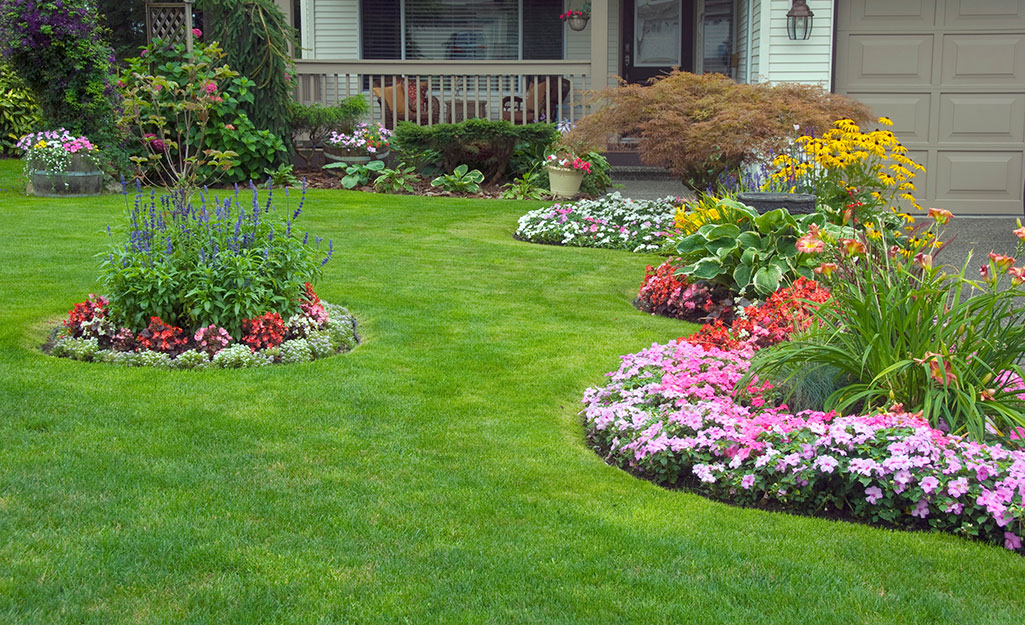
Cool-season grass generally originates in the North and is characterized by rapid growth in the spring and fall. Cool-season grass types often turn brown during periods of high summer heat. The best time to plant cool-season grass seed is in late summer or early fall.
Determine your grass type to find the best lawn fertilizer for your yard. Warm-season grasses such as bahia, bermuda, centipede, St. Augustine and zoysia grow vigorously throughout much of the year and need a little more attention than cool-season varieties.
The cool-season grasses like fescue, Kentucky bluegrass and rye grow and spread more slowly than warm-season varieties. They are typically semi-dormant during the summer, so you fertilize them just twice a year: once at the beginning of spring and again at the beginning of fall.
You can also reinvigorate your summer lawn by overseeding. Cool season grasses in the North can be overseeded in spring and fall. That window is open a little longer in the South. You can overseed warm season grasses from late spring to mid-summer. Learn more about overseeding your lawn.
When to Fertilize Your Lawn
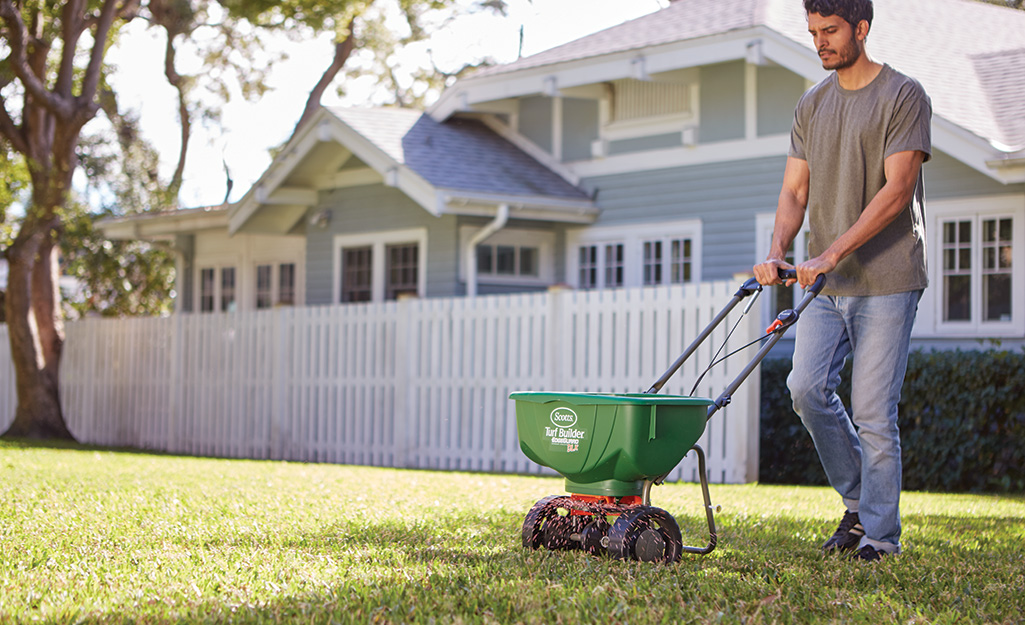
The best time to fertilize your lawn is in the fall while grass is growing and storing nutrients. However, your lawn fertilizing schedule will depend on the type of grass you have and the type of fertilizer you’re using.
Early fall means cooler weather with warm soil and ample rain, creating the perfect environment for grass to develop strong roots and grass seeds to germinate.
An application of nitrogen-rich, slow-release fertilizer around Labor Day will feed your lawn and provide essential nourishment for the coming spring.
Spring is the next most important time of the year to fertilize your lawn. Spring grasses come to life hungry and ready to be fed. Fertilize your lawn as soon as the dormant grass is at least fifty percent green again.
Summer is hard on lawns because of heat, drought, insects and increased foot traffic. Feeding your lawn slow-release fertilizer at the start of summer will help keep your grass healthy and green throughout the season. This is not necessary for cool-season grasses.
If insects are a problem in your yard during the summer, consider using a fertilizer with insect control.
Apply slow-release, high-nitrogen fertilizer every 90 to 120 days at the start of spring, summer and fall. Apply all-purpose fertilizer every six to eight weeks.
How to Fertilize Your Lawn
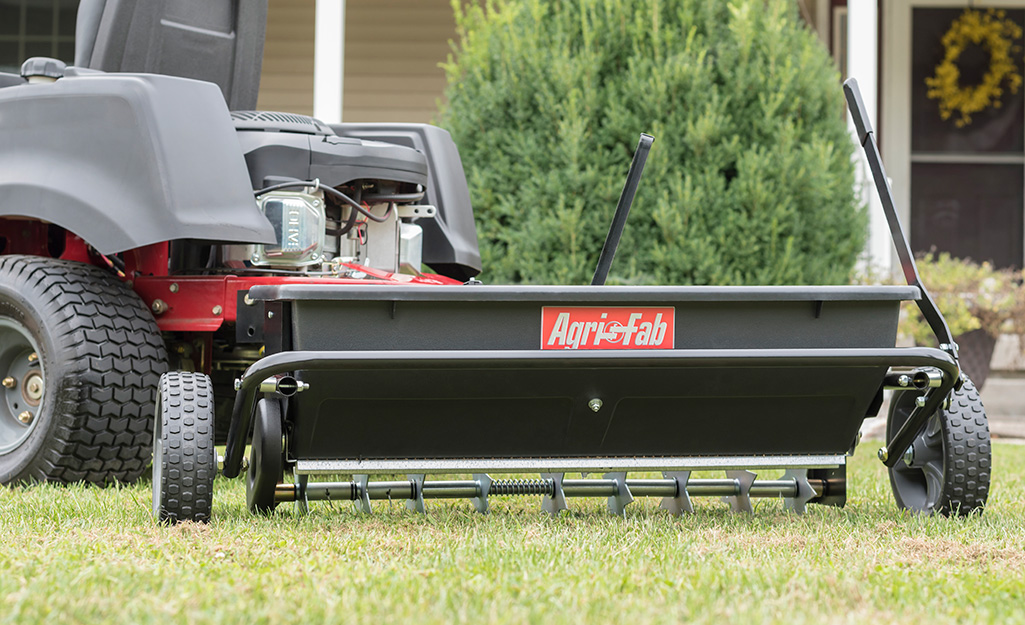
Before you fertilize, check your local weather forecast. Plan to fertilize just before a day of light, steady rain. You’ll save water and your grass will be well-fed.
Using an
aerator
to make small holes in your lawn before you fertilize can make it easier for fertilizer and water to reach the roots of the grass.
Fertilizers are typically grouped as granular, water-soluble and organic, and you can choose from walk-behind, handheld, drop or liquid spreaders to apply fertilizer to your lawn.
When trying to determine how much fertilizer to use on your lawn, remember that every eight steps is roughly equal to 10 feet. For size reference, compare your lawn to the size of a tennis court, which is 78 feet long and 36 feet wide.
It helps to break up your lawn into easily measurable sections. Sketch out a rough drawing of your yard and break it into a few large squares, rectangles, circles and triangles.
- For squares and rectangles, measure the length and the width, then multiply those two numbers to get your area.
- For circles, measure half the distance across the center of the circle then multiply by 3.14.
- For triangles, measure the base and the height, multiply the two numbers, then divide by two.
- Once you have the areas determined for each shape, add up the areas to get the total area of your lawn.
Choose from broadcast, handheld and drop
spreaders
to apply fertilizer to your lawn.
Find recommendations for the proper spreader settings on the label of most fertilizers.
Use quick-release,
pre-emergent weed control
(or weed and feed) fertilizer to eliminate unsightly weeds without harming your grass. Avoid using weed and feed if you plan to reseed your lawn in the same season. As a general rule, you can safely apply weed and feed in the spring and overseed in the fall.
Fertilizer Solutions for Common Lawn Problems
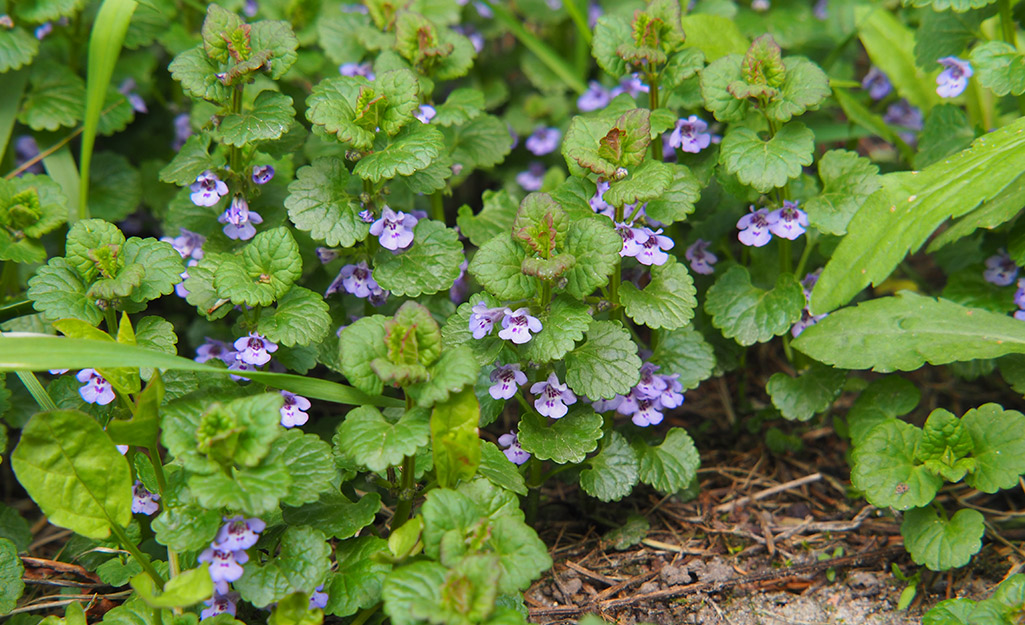
In addition to giving your lawn vibrant, green color and boosting healthy growth, the best fertilizer for grass can help control weed growth, moss and insects. Some
organic fertilizers
or
lawn foods don't have additional features. Look for fertilizers that will:
- Kill common weeds
- Kill crabgrass
- Control moss
- Kill insects, pests and grubs
- Improve lackluster color
Finally, if you're not sure about how much fertilizer you need, take advantage of our grass seed calculator. Fertilizing your lawn can be a simple, roughly seasonal process once you match the correct type of fertilizer to your grass, whether you hire lawn care providers or do it yourself. Looking for a specific product or other item? Search by voice or image with The Home Depot Mobile App.































